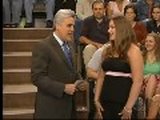ABOUT AMATEUR RADIO
WHAT IS AMATEUR RADIO?
It is both a hobby and a service – better known as ham radio. Unlike most hobbies, however, operators are licensed by their national government (in the U.S., by the Federal Communications Commission) and provide a number of services to their nation. Because It is a true service its formal name is the Amateur Radio Service. It is a non-profit hobby in which ham operators communicate with other hams in all parts of the world and out of this world! They donate their time for emergency communications, local events. Communications is accomplished via means of what is called modes of transmitting and receiving. Once licensed, ham operators are able to use a wide variety of communications technologies examples of these modes are in the “Modes of communications page“. With an appropriate ham license, you can use high technology radios for personal communications between friends and family, with no air time charges like cellular. You can provide assistance to your community during emergencies. You can access 911 from your radio (available on many repeater systems) to call for help. You can also place personal phone calls through many repeater systems.
NV9L working as W9C Special Event Station honoring Walter Cronkite 100th birthday
Many questions regarding how all this got started can be answered with these site pages on, where did it all start and the Origins of the Handie Talkie. Two-way radio communications by individuals as a leisure-time activity. Amateur, or ham, radio is defined by international treaty as a “service of self-training, intercommunication’s, and technical investigation carried on by amateurs; that is, by duly authorized persons interested in radio technique solely with a personal aim and without pecuniary interest. The government allows amateur operators many privileges because the hobby is partially based on service to the general public, and hams can be relied on to assist during emergencies. Groups of amateur operators meet annually to practice handling emergency communications in the field and to compete against other groups nationwide in performing certain emergency-related tasks. Amateur operators may set up warning and relief networks during the hurricane and tornado seasons, and handle communication when telephone lines and cell towers are damaged by disasters. In addition to public service activities, amateurs enjoy many recreational activities, including DXing (where the objective is to contact amateurs in as many foreign countries as possible), contesting (where the amateurs compete for the maximum number of contacts in a given time span), and foxhunting (where the objective is to use radio skills to locate a hidden transmitter).
Since high-frequency (HF) signals (below 30 MHz) are reflected from the Kennelly-Heaviside ionosphere layers, amateurs are commonly able to carry out international communication. Very high frequencies (VHF; 30–300 MHz) and ultrahigh frequencies (UHF; 300–3000 MHz) have been subject to exploration by amateurs at the leading edge of communications technology. Amateurs bounce signals off the Moon or ionized meteor trails, and communicate through amateur operator-built earth satellites called OSCAR (orbiting satellites carrying amateur radio). ( McGraw-Hill Science & Technology Encyclopedia ) Also called “ham radio,” it is wireless voice communications that can reach “ham operators” up to hundreds of miles away, sometimes thousands. Amateur radio is often a hobby, but can also be a public service. Dating back to the early 1900s when Morse code was transmitted rather than voice, amateur radio operates in the low and high-frequency bands using AM, FM, SSB (single sideband) and other modulation methods (Modes).
 Speed test Morse against Texting
Speed test Morse against Texting
LICENSING IS REQUIRED
In order to use an amateur radio, applicants must pass a test, which varies depending on the country. There are several test levels, each one granting more privileges to the operator, such as range of frequencies and antenna power. Licensed operators are issued a “call-sign,” which identifies them on the air. In order to use an amateur radio, applicants must pass a test, which varies depending on the country. There are several test levels, each one granting more privileges to the operator, such as range of frequencies and antenna power. Licensed operators are issued a “callsign,” which identifies them on the air. Amateur radio’s origins lingered for decades. Finally, in 1991, Morse code proficiency was removed as a requirement for obtaining a basic license in the U.S. and finally in 2007 for an advanced license. The ARRL (American Radio Relay League) will give your curiosity some useful answers. Also you may want to look at the Birmingham Amateur Radio Club info page and also the Beginner’s Guide to Making CW Contacts by Jack Wagoner WB8FSV. Please feel free to visit this site anytime, and browse through the ham links, as I will be maintaining it frequently.
